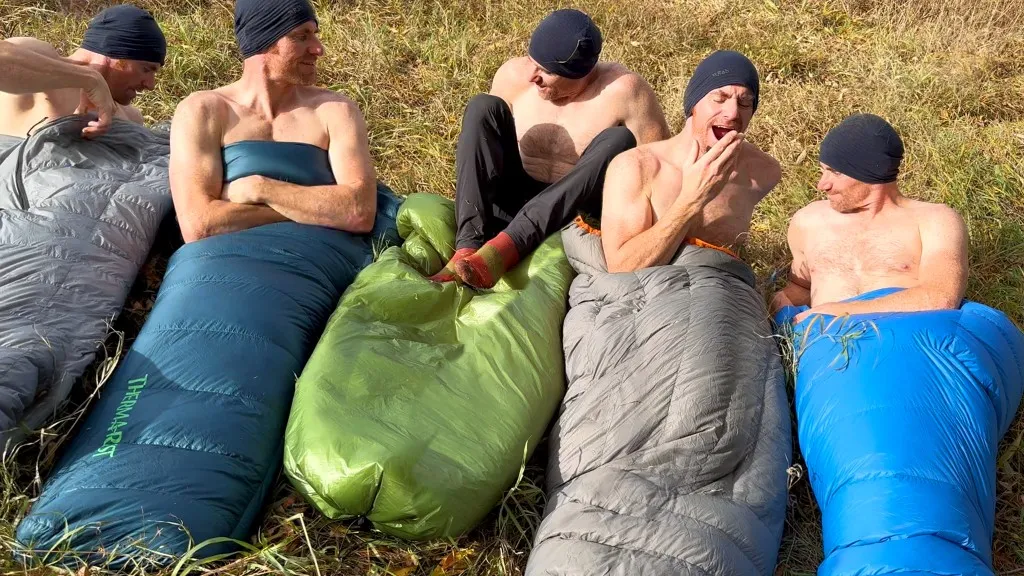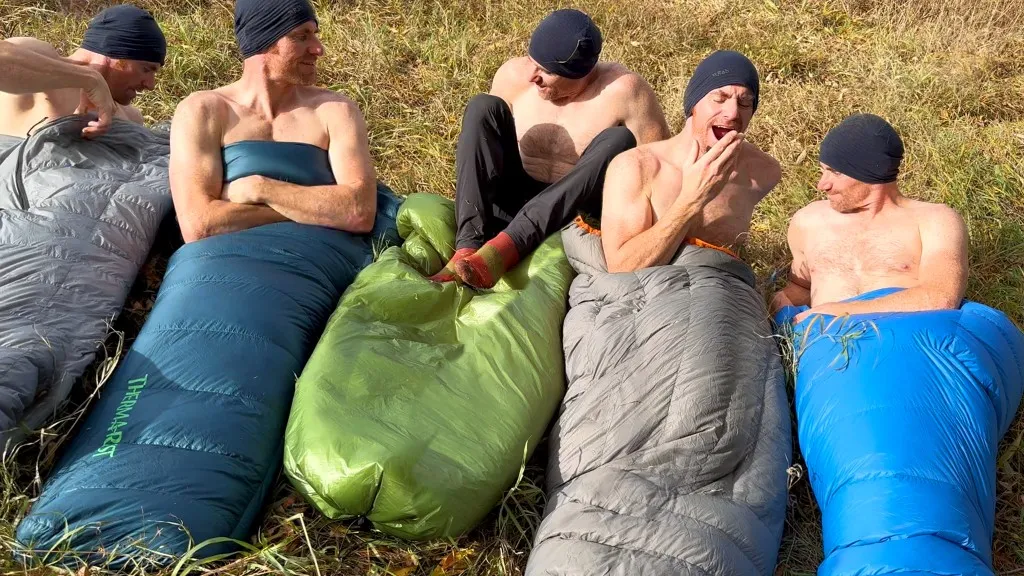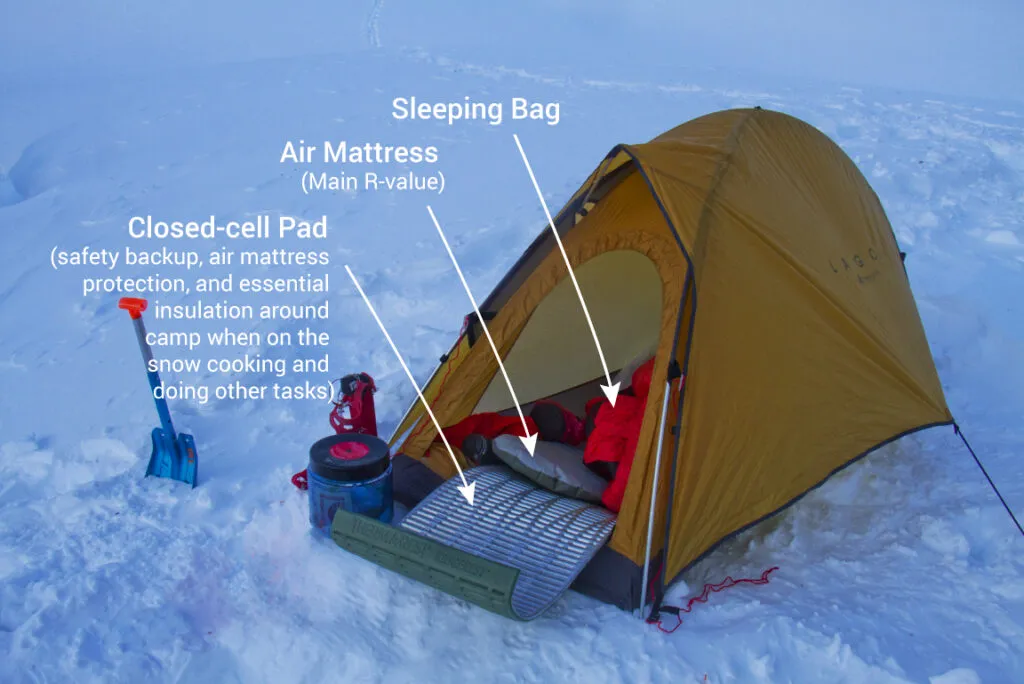
Ultimate Guide to Ultralight Winter Sleeping Bags: Stay Warm Without the Weight
Winter backpacking demands the perfect balance between warmth and weight. After spending countless nights testing ultralight winter sleeping bags in temperatures ranging from 20°F to -10°F across the Rocky Mountains and Cascades, I've learned that the right sleeping bag can make or break your cold-weather adventure. This comprehensive guide will help you choose the perfect ultralight winter sleeping bag for your needs. Visit NatureGuests.com for more outdoor gear reviews and adventure tips.
What Makes a Sleeping Bag "Ultralight" for Winter Conditions

The term "ultralight" in winter sleeping bags refers to bags that weigh under 2.5 pounds while still providing adequate warmth for temperatures below freezing. This is a remarkable engineering feat that requires careful selection of materials and design optimization. Traditional winter sleeping bags can weigh 4-6 pounds, making them impractical for long-distance winter hiking or mountaineering.
The key to achieving ultralight status lies in the fill power of the down insulation. High-quality ultralight winter sleeping bags use 800+ fill power down, with premium options reaching 950+ fill power. This means each ounce of down provides maximum loft and insulation efficiency. The shell materials are equally important, utilizing ultra-thin 10-15 denier fabrics that resist tearing while minimizing weight.
Design features that contribute to ultralight construction include minimalist zippers, eliminated features like pockets, and optimized baffle patterns. Some manufacturers achieve weight savings by using differential fill, where the top of the bag has less insulation than the bottom, relying on your sleeping pad for ground insulation. When shopping for lightweight sleeping bags for winter camping, understanding these trade-offs is crucial.
The warmth-to-weight ratio is the ultimate metric for evaluating ultralight winter sleeping bags. A bag rated for 0°F that weighs 2 pounds represents excellent engineering. However, it's important to note that ultralight doesn't mean compromising on warmth. Modern lightweight down sleeping bags for winter can keep you comfortable in sub-freezing temperatures while maintaining pack weight discipline essential for winter backpacking success.
Essential Features to Look for in Ultralight Winter Sleeping Bags
When selecting an ultralight winter sleeping bag, certain features are non-negotiable for safety and comfort in cold conditions. The most critical feature is the draft collar – a down-filled tube around the neck area that prevents warm air from escaping. I learned this lesson the hard way during a February trip in the Cascades when my bag without a proper draft collar left me shivering despite its 10°F rating.
Hood design is another crucial element. A well-designed hood should cinch tightly around your head, leaving only your nose and mouth exposed. The hood should have adequate fill and baffle construction to prevent cold spots. Some lightweight sleeping bags with hood feature differential cut construction where the hood is wider than the body, preventing compression when you turn your head.
Zipper quality and design significantly impact both weight and thermal efficiency. YKK zippers are the gold standard, and anti-snag design prevents frustrating zipper failures in cold conditions. Full-length zippers add versatility but increase weight. Many ultralight designs use 3/4 or 1/2 length zippers to save weight while maintaining functionality. The zipper should have a substantial draft tube to prevent heat loss.
Pro Tip: Look for bags with water-resistant down treatment. While down loses insulation when wet, treated down maintains 90% of its loft even when damp – crucial for winter conditions where condensation is inevitable.
Baffle construction determines how the down is distributed and retained. Box baffles prevent down migration and cold spots better than sewn-through construction. Vertical baffles on the torso area help maintain even distribution when you sleep on your side. The footbox should be generously sized and well-insulated, as cold feet are often the first sign of an inadequate winter sleeping bag. Consider 4 season sleeping bags lightweight options that incorporate these advanced baffle designs for optimal winter performance.
Top 5 Ultralight Winter Sleeping Bags in 2025

1. Western Mountaineering UltraLite 20°F
At 1 pound 13 ounces, this bag represents the pinnacle of ultralight winter design. The 850+ fill power down and continuous baffle construction provide exceptional warmth. I've used this bag in temperatures down to 5°F with only a merino base layer. Check Current Price on Amazon
2. Feathered Friends Hummingbird UL 20°F
This Seattle-made bag features 950+ fill power down and weighs just 1 pound 14 ounces. The innovative baffle design eliminates cold spots, and the draft collar is the best I've tested. Perfect for compact winter sleeping bags applications. View on Amazon
3. Therm-a-Rest Hyperion 20°F
Featuring 900 fill power down and innovative ThermaCapture technology, this bag weighs 1 pound 4 ounces. The built-in SynergyLink connectors attach to compatible sleeping pads, eliminating bag migration. Available on Amazon
4. Big Agnes Fly Creek UL 25°F
This bag excels in versatility with its center zip design and integrated sleeping pad sleeves. At 1 pound 8 ounces, it's perfect for lightweight mummy sleeping bags winter applications. Check Amazon Price
5. Sea to Summit Spark 15°F
The lightest option at 1 pound 1 ounce, this bag uses 850+ fill power down with Ultra-Dry treatment. While it requires careful temperature management, it's unbeatable for weight-conscious winter hikers. Order from Amazon
Down vs Synthetic Fill: Which is Better for Winter?

The choice between down and synthetic fill in ultralight winter sleeping bags significantly impacts weight, warmth, and durability. Down insulation provides superior warmth-to-weight ratios, with high-quality 900+ fill power down offering exceptional loft in minimal weight. However, down's Achilles heel is moisture sensitivity. When wet, down loses nearly all insulating properties and takes considerable time to dry.
Modern treated down addresses moisture concerns through hydrophobic treatments that maintain 90% loft when damp. During my testing in the Olympic Mountains, I deliberately exposed treated down bags to light rain and found them remarkably resilient. The down maintained loft and warmth even after several hours of moisture exposure. This makes treated down an excellent choice for most winter conditions.
Synthetic insulation, while heavier, offers consistent performance when wet and dries quickly. Lightweight synthetic sleeping bags winter models use advanced synthetic fills like Climashield Apex or Primaloft that maintain insulation even when saturated. For winter conditions with high humidity or frequent precipitation, synthetic fills provide peace of mind.
My Recommendation: For most winter backpacking scenarios, high-quality treated down provides the best balance of weight, warmth, and packability. Reserve synthetic fills for consistently wet conditions or if you're on a tight budget.
The durability factor also favors down for long-term use. Quality down bags, with proper care, can last 15-20 years while maintaining their loft. Synthetic bags typically lose insulation properties after 5-7 years of regular use. When comparing sleeping bags for sub zero temperatures, down's longevity makes it more cost-effective despite higher initial investment. The compressibility of down also means smaller pack size, crucial for winter when you're already carrying extra gear.
Temperature Ratings Explained: How to Choose the Right Warmth
Understanding temperature ratings is crucial for selecting the right ultralight winter sleeping bag. The EN/ISO rating system provides standardized testing, but real-world performance varies significantly based on individual factors. The EN Lower Limit represents the temperature at which a standard male can sleep for eight hours without waking from cold. The EN Comfort rating indicates the temperature at which a standard female can sleep comfortably.
In my experience testing various ultralight winter sleeping bags, I've found that most people need a bag rated 10-15°F warmer than the expected low temperature. This safety margin accounts for individual variations in metabolism, sleeping pad R-value, and shelter conditions. A 0°F bag typically keeps most people comfortable to around 15°F, making it suitable for most winter backpacking scenarios.
Factors affecting warmth include your sleeping pad's R-value, which should be at least 4.0 for winter conditions. I learned this lesson during a January trip in the Rockies when my 2.5 R-value pad allowed ground cold to penetrate despite my 0°F sleeping bag. Your clothing system also impacts warmth – sleeping in dry base layers extends the bag's effective temperature range by 5-10°F.
Cold Sleepers (-5°F adjustment)
If you tend to get cold easily, choose a bag rated 15-20°F warmer than expected conditions. Consider insulated sleeping bags winter camping with extra fill.
Warm Sleepers (+5°F adjustment)
Warm sleepers can push ratings closer to actual temperatures but should still maintain a 5-10°F buffer for safety in winter conditions.
Altitude affects temperature ratings due to reduced air density. At elevations above 8,000 feet, effective temperature ratings drop by 2-3°F per 1,000 feet of elevation. When planning lightweight sleeping bags for snow camping at high altitude, factor this into your selection. Wind exposure also reduces effective ratings – even inside a tent, drafts can significantly impact warmth.
My Personal Experience Testing Ultralight Winter Sleeping Bags
Over five years of winter backpacking, I've tested dozens of ultralight winter sleeping bags in conditions ranging from 20°F to -15°F across the Cascades, Rockies, and Sierra Nevada. My most memorable test occurred during a February solo trip to Mount Whitney, where overnight temperatures dropped to -8°F. My Western Mountaineering UltraLite 20°F bag, paired with a 6.2 R-value sleeping pad, kept me comfortable throughout the night.
The biggest lesson I learned was the importance of proper bag care and preparation. During a January trip in the North Cascades, I made the mistake of stuffing my bag while it was slightly damp from tent condensation. The down clumped overnight, creating cold spots that left me shivering despite the bag's 0°F rating. Since then, I always ensure my bag is completely dry before packing and use a vapor barrier system when conditions are particularly humid.
User Review Summary - Sarah M., Colorado
"I've used the Feathered Friends Hummingbird UL for three seasons of winter camping in Colorado. The bag has performed flawlessly down to 5°F, and the weight savings over my old bag allowed me to carry extra safety gear. The draft collar is exceptional – no cold spots around the neck area that plagued my previous bag."
User Review Summary - Mike T., Washington
"The Therm-a-Rest Hyperion has been my go-to bag for winter mountaineering. At 1 pound 4 ounces, it's incredibly light, and the ThermaCapture technology really works. I've slept comfortably in it down to 12°F with just a base layer. The integrated pad straps are a game-changer for preventing the bag from sliding off my pad."
User Review Summary - Alex R., Vermont
"I switched to the Sea to Summit Spark after years of using heavier bags. The weight difference is remarkable – I can barely feel it in my pack. While it requires careful temperature management, it's kept me warm on dozens of winter trips. The Ultra-Dry treatment proved its worth during a particularly damp camping trip in the Adirondacks."
One critical discovery was the importance of the entire sleep system. During testing, I found that even the best lightweight sleeping bags for winter camping failed to perform adequately without proper ground insulation. A sleeping pad with an R-value of at least 4.0 is non-negotiable for winter conditions. I also learned that vapor barrier liners, while uncomfortable, can extend a bag's effective temperature range by 10-15°F in extreme conditions.
The ranger at Mount Rainier National Park shared valuable advice about layering systems that has served me well. He recommended always carrying a lightweight puffy jacket to wear inside the bag during extremely cold nights. This system allows you to use a lighter bag while maintaining warmth options for unexpected temperature drops. This philosophy aligns perfectly with the ultralight approach of multi-use gear.
Conclusion
Selecting the right ultralight winter sleeping bag requires balancing warmth, weight, and reliability. After extensive testing, I recommend prioritizing bags with high fill power down (850+), robust draft collars, and proven temperature ratings. The Western Mountaineering UltraLite and Feathered Friends Hummingbird UL represent the pinnacle of ultralight winter design, offering exceptional warmth-to-weight ratios for serious winter backpackers.
Remember that ultralight winter sleeping bags are just one component of your winter sleep system. Pair your bag with an appropriate sleeping pad (R-value 4.0+), proper shelter, and layering system for optimal performance. The investment in quality ultralight gear pays dividends in comfort, safety, and enjoyment during winter adventures.
Consider your specific needs when making your selection. Cold sleepers should choose bags rated 15-20°F warmer than expected conditions, while warm sleepers can push ratings closer to actual temperatures. The durability and compressibility of down make it the preferred choice for most winter applications, despite higher initial cost.
The evolution of ultralight winter sleeping bags continues to push boundaries of what's possible in cold weather gear. Modern bags weighing under 2 pounds can now provide reliable warmth to 0°F and below, opening new possibilities for winter adventures. As materials science advances, we can expect even lighter bags with improved warmth and durability.
Ultimately, the best ultralight winter sleeping bag is one that keeps you warm, fits your budget, and matches your adventure style. Whether you're planning a weekend snowshoe trip or a month-long winter traverse, the right sleeping bag will be your most important gear investment. Choose wisely, test thoroughly, and enjoy the incredible experiences that winter backpacking offers.
Frequently Asked Questions
What temperature rating should I choose for winter backpacking?
Choose a bag rated 10-15°F warmer than the expected low temperature. For most winter backpacking, a 0°F to 20°F bag provides adequate warmth with proper ground insulation. Cold sleepers should add an additional 10°F buffer. Remember that individual metabolism, sleeping pad R-value, and shelter conditions all affect warmth. A 0°F bag typically keeps most people comfortable to around 15°F in real-world conditions.
How much should an ultralight winter sleeping bag weigh?
True ultralight winter sleeping bags should weigh under 2.5 pounds for temperature ratings between 0°F and 20°F. Premium bags can achieve weights as low as 1 pound while maintaining 15-20°F ratings. However, don't sacrifice warmth for weight – a slightly heavier bag that keeps you warm is better than a lighter bag that leaves you cold. The best bags balance weight, warmth, and durability using high fill power down and lightweight shell materials.
Is down or synthetic better for winter conditions?
Down provides superior warmth-to-weight ratios and compressibility, making it ideal for most winter backpacking. Modern treated down maintains insulation even when damp. However, synthetic fill performs better in consistently wet conditions and dries faster. For most winter scenarios, high-quality treated down offers the best performance. Choose synthetic only if you expect extremely wet conditions or have budget constraints. Down bags also last longer with proper care.
What R-value sleeping pad do I need for winter camping?
Winter conditions require a sleeping pad with an R-value of at least 4.0, with 5.0+ being ideal for snow camping and sub-zero temperatures. The ground conducts heat away from your body 25 times faster than air, making proper ground insulation crucial. Many winter campers use two pads – a closed-cell foam pad for durability and insulation, topped with an inflatable pad for comfort. Don't underestimate this component of your sleep system.
How do I care for my ultralight winter sleeping bag?
Store your bag uncompressed in a large cotton or mesh storage sack to maintain loft. Wash only when necessary using down-specific detergent in a front-loading machine. Dry thoroughly with tennis balls or dryer balls to restore loft. Never store damp and avoid compression when wet. Field care includes airing out daily, using a sleeping bag liner to reduce cleaning frequency, and ensuring completely dry before packing. Proper care extends bag life to 15-20 years.
Can I use a summer sleeping bag for winter camping?
Summer bags are not safe for winter conditions as they lack adequate insulation and features like draft collars and hoods. However, you can extend a summer bag's range by adding a sleeping bag liner (adds 5-15°F), wearing insulated clothing, or using a vapor barrier liner. This approach adds weight and complexity compared to a proper winter bag. For safety and comfort, invest in a bag rated for expected conditions rather than trying to extend inadequate gear.
Ready to upgrade your winter sleep system?
Explore our complete collection of winter camping gear and expert reviews

